Case Study of Chanel's Brand Management
Info: 7386 words (30 pages) Dissertation
Published: 30th Jul 2021
Table of Contents
Brand Personality, Experiences and Architecture of Chanel
Introduction
Luxury fashion market is a dynamic, and nowadays unpredictable for social, economic and technological reasons. Luxury fashion brands have to be managed and marketed differently (Bastien & Kapferer 2009). Since the demand for the value increased towards to fashion luxury, marketing and management styles have shifted to create a customer centric value, rather than product centric value, especially in brand’s customer experiences (Tynan et al. 2009). Globalisation and Internet created that demand for new managerial tactics in the market (Atwal and Williams, 2009).
One of the most valuable luxury fashion brands, Chanel, which “is a privately held company owned by Alain and Gerard Wertheimer” (Forbes 2017), operates world-wide with its different product categories such as, beauty, fashion and accessories, is going to be discussed in this case study.
In order to better discuss the brand; challenges that company is faced with, brand’s history, position of the brand, brand equity, brand value, competitive advantages of the brand, brand’s personality, customer experience, architecture and the future potential of the brand is going to be evaluated. In the conclusion, product development for Chanel is going to be suggested as a development for brand strategy.
Challenges Faced by Chanel
Nowadays, fast consumption is highly demanded in almost every sector. Even the luxury fashion brands are facing challenges in that issue. Fast fashion retailers are being preferred to luxury fashion products by many customers. Luxury fashion brands are offering high class, sophisticated designs with high prices, and not accessible for everyone. “By contrast, fast fashion ensures permanent assortment rotation, low prices, and accessible variety, but with a great aesthetic content, which derives from those brands’ ability to imitate the latest luxury fashion brand catwalk offerings” (Byun & Sternquist 2011; Gabrielli et al. 2013, cited in Amutulli et al. 2015). For instance, imitating luxury fashion brand’s designs, and selling them in lower prices put Zara in a higher position, in comparison to Chanel, in the list of the most valuable brands (Forbes 2017).
Another issue that Chanel is facing is digitalisation. Luxury brands are in the middle of a huge paradox, because luxury fashion is a market “where tradition and creativity collide” (Ritson et al. 2010). Due to technological developments, online sales also became popular. Chanel wants to protect their traditional iconic brand identity, as well as catching the new trends. According to Chanel, “fashion cannot be totally digitised” (Ellison 2018), however they are open to improving their brand experience. For instance, “Chanel has teamed up with global ecommerce platform Farfetch to develop digital initiatives including a branded app to help create a personalised in-store experience as well as better target millennial consumers” (Ellison 2018). Also, “Chanel has launched a number of pop-up game centres, where it presented its Spring 2018 beauty collection, as well as offering visitors a chance to play customized classic arcade games” (Mintel 2018).
Technological developments and globalisation led to another important problem for luxury fashion brands, which is ‘counterfeiting’. Chanel is fighting with the online channels for counterfeiting, the brand “has successfully won a lawsuit against more than 24 Amazon sellers, reports WWD, who were accused of selling replica items featuring the famous Chanel logo” (Conlon 2017).
A History of Chanel
A history of Chanel can be seen as the history of the brand authenticity, “because triumph and tragedies add authenticity in several ways” (Beverland 2009, p.48). Chanel is one of the great examples of, how a brand can emerge from tragedies and have a triumph at the end. Chanel is now in the list of Forbes’s “World’s Most Valuable Brands”, with its brand value of $7.3 Billion (Forbes 2017).
Channel’s brand history can be considered as Coco Chanel’s biography, because the brand completely shaped around her from the beginning. Coco Chanel was born in 1883, and in reduced circumstances, however “the austerity and purity of her life in the convent, however, found its way into her designs” (Wilson 2010). Chanel’s story began in 1909, when she opened a hat store in Paris. After twelve years, with the iconic perfume Chanel No.5, Chanel became an actual brand. “When Chanel No.5 was introduced in 1921, she became an international brand, but the perfume’s origins are as embroidered as her childhood” (Wilson 2010). She was an opportunist and innovator, even in the post-World War 2 era, she wanted Chanel to be the first fashion brand which created a perfume. “In beauty terms, it all starts with Chanel No5. It is the best-selling fragrance in the world” (Chesters 2012). It was not just a perfume any more, after “Marilyn Monroe famously answered the question “What do you wear to bed?” with the line “Just a few drops of No. 5″” (Chester 2012), the popularity of the perfume increased and became an icon.

Picture 1: Marilyn Monroe and The Iconic Bottle of Chanel No.5
The iconic perfume (Picture 1), started the journey of Coco Chanel’s long lasting designs.
“She pioneered many innovative design touches, including the deconstructionist technique of fraying” (Jennings 2008). Even the colour black became famous, after Chanel’s ‘little black dress’ (Picture 2), women started to include wearing black in their daily lives. Minimalism and masculinity also became popular after Chanel’s designs.
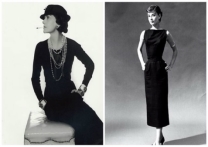
Picture 2: ‘Little Black Dress’ on Coco Chanel (left), and Audrey Hepburn (right)
After Coco Chanel’s death, Karl Lagerfeld became the chief designer of Chanel (1983), and he became the new iconic face of Chanel. “Lagerfeld has also never been afraid to delve into whatever’s happening in culture at the time” (Holt 2016). In Chanel’s new collections, heritage of the brand always preserved and the cultural changes also applied at the same time.
Chanel’s Competitive Position
According to Wedel and Kamakura (2000), there are four main criteria which segment markets: identifiability, size, accessibility and responsiveness. Brand’s positions are shaping in the market from their differences. Brands should create their own uniqueness to have a great position in the market. “Being unique is what counts, not any comparison with a competitor” (Kapferer & Bastien 2009). Chanel is creating that uniqueness with its iconic symbols. The brand belongs to luxury fashion group, and is in the intersection position of high prices and high prestige (Picture 3). Chanel’s main competitors are Louis Vuitton, Prada, Hermes and Burberry in the market.
“A downgrading stimulus with a price reduction and a greater availability of the offered fashion items leads to a decreased association with the luxury concept” (Behrens et al. 2013). Exclusivity increase customers desire to have luxury products. “Chanel will not sell a handbag for much less than €2,000” (The Economist 2014). High pricing and exclusivity also increase the value of Chanel, in Statista’s list, which is “leading 10 most valuable luxury brands worldwide” (Statista 2017), Chanel has the fourth place amongst the other luxury brands. (Picture 4)
Chanel is, also a highly recognizable and responsive brand. Chanel is responding to environmental changes in order to create a continuous value to its customer. In Forbes’s list (2017), the brand ranked as 87th most valuable brand. Bruno Pavlovsky, Chanel’s president of global fashion also mentioned that, “we will only do what the client wants to do. And we will only move at their pace. This is not Big Brother. This is Chanel” (Ellison 2018). In Table 1, also brand’s position represented according to point of parity and differences.
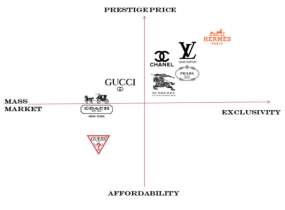
 Picture 3: Positioning Map of Chanel
Picture 3: Positioning Map of Chanel

Picture 4: Brand Value of the Leading 10 Most Valuable Luxury Brands Worldwide in 2017 (Statista 2017)
Brand Value and Brand Equity
There are lots of ways to provide value for the target customers of luxury fashion brands. Brand logo and the brand name are the unique factors, that create brand awareness and a relationship in the first place (Chevalier & Mazzalovo 2008; Okonkwo 2007). Especially luxury brands are providing symbolic/expressive value (Vigneron & Johnson, 1999, 2004), through their name and logo, and creating a brand image. Luxury brands have competitive advantage for having highly recognisable brand image and brand equity (Amatulli & Guido 2012). For instance, Chanel is ranked as the most recognisable brand even in China (Seymour 2016).
The other prior desire of customers, who prefers luxury fashion brands, is their wish to feel special. Target customers of luxury fashion brands, are mostly value seekers. In order to provide customer satisfaction, brands have to offer that aspect (Okonwo 2007; Tynan et al. 2009; Payne & Holt 2001). Brands are delivering that value through customer experience. Their service quality, packaging and stores are part of their value offerings more than their products in today’s world (Payne et al. 2009; Prahalad & Ramaswamy 2004; Vargo & Lusch 2004). Chanel is offering high quality packaging, service and sophisticated stores. (Picture 5, 6). Even in the packaging, Chanel is reflecting their brand image by applying its minimalism and authenticity. As Michel Duplis, who is the director of package development in Chanel, mentioned “merchandising is like theater. The first contact with the brand is the package. You need to have everything together” (BXP Magazine 2009). Chanel is also offering value, based on its authenticity and heritage. Customers are seeking for an extraordinary brand experience to compensate the high prices, when they are shopping from luxury fashion brands. Chanel is creating a value by helping them to experience the difference in every aspect. Also, “brand value refers to brand equity, which is an indispensable intangible asset for luxury companies and translates into revenues” (Amatulli et al., 2016).
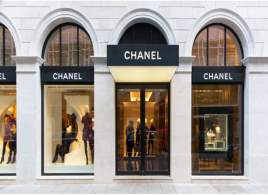
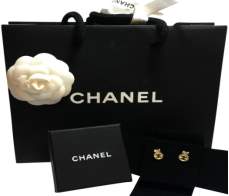
Picture 5: Packages of Chanel Picture 6: Entrance of a Chanel Store
Brand equity is the way that customers see the brand (Aaker 2009). The secret behind Chanel’s success at creating a strong brand equity is, when the brand is adopting new trends in its designs, products or marketing activities, the heritage of the brand is always protected. Even when, Chanel was preparing new collections for 2017, the brand exploited this heritage in of Chanel Gabrielle handbags and a fragrance (Agnew 2017). Brand equity should be timeless to create customer loyalty in a long term. In Picture 7, Customer Based Brand Equity Model (Keller 2001) is depicted according to Chanel.
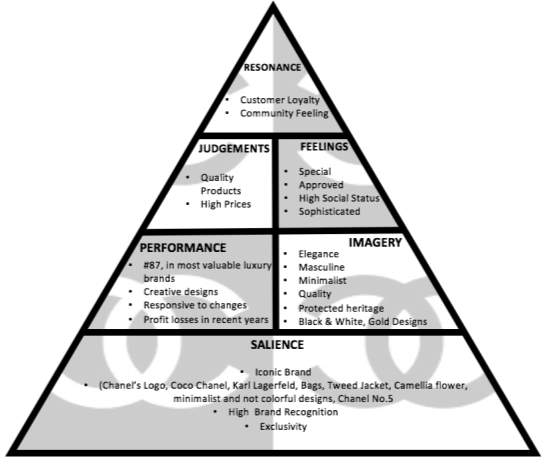
Picture 7: Chanel’s Customer Based Brand Equity Model
Critical Analysis of Chanel
Chanel has too many competitive advantages over the other brands. One of them is Chanel’s historical background, with its 109 years old brand heritage. The brand, also has an interesting and effective story from the beginning. As it is mentioned before, Coco Chanel came from poverty and created one of the most iconic brands in the world. In customer experience, those kind of stories help people to feel attached to the brand’s success, and increase their trust to the brand (Silverstein and Fiske, 2003; Fog et al, 2005). Customer values those stories for their identity value (Holt 2014). “Stories have heroes and marketers can turn the brand, the employees, or the customers into heroes with positive effects on both internal and external brand perceptions” (Kelley and Littman, 2006; Guber, 2007 cited in Lundqvist et al 2012). Coco Chanel is the hero behind whole Chanel story. She changed the whole fashion world with her unique designs. Her long lasting designs constructed the brand recognition. Chanel also has too many distinguishing icons like, Camellia, tweed jacket and Chanel suits. (Picture 8,9,10). Those icons cannot be thought separately from the brand. “Customer value some products as much for what they symbolize as for what they do” (Holt 2014, p.3). Chanel created symbols rather than products.
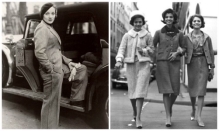
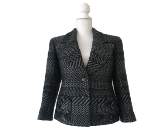
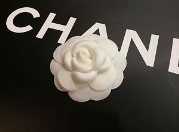
Picture 8: Chanel’s Camellia Picture 9: Tweed Jacket Picture 10: Chanel Suits
Unique selling proposition and niche premium pricing are the other characteristics of Chanel, which constructed competitive advantage over the competitors. Chanel always constructed its brand strategy in the frame of brand values. For having a competitive advantage, it is important to reflect the core of the brand to the customers (Birtwistle & Freathy 1998; Bridson & Evans, 2004). Chanel has a unique brand identity and premium designs, the brand is reflecting that by, its pricing and selling propositions. “The product’s price must reflect a value proposition relative to where the competition is positioned” (Carroll 2012). This is the reason behind customers are compensating high prices of fashion luxury goods by the brand value.
Brand Personality, Experiences and Architecture of Chanel
Brand personality’s definition is “the set of human characteristics associated with a brand” (Aaker, 1997). Brands have five dimensions of brand personality which are sincerity, excitement, competence, sophistication and ruggedness. (Aaker 1997) Also Jevons (2007) mentioned that, brand personality is constructed by brand’s identity, functionality, symbol(ism), sustainability, differentiation, and value creation/delivery. Besides their products’ functionality and quality, brands have to offer unique and symbolic brand personality, because “people identify strongly with icons and often rely on these symbols in everyday lives” (Holt 2014 p.1). Chanel’s brand identity reflects Coco Chanel, and being “the ultimate house of luxury, defining style and creating desire, now and forever” (Farfan 2015). Chanel is a symbol of uniqueness, and the brand’s personality reflects creativity. Continuously offering new designs, and reflecting the brand image by using them is increasing the value for their brand personality. “Karl Lagerfeld, has always deferred to Coco Chanel’s influence, and her mythology has provided a rich stream of product launches” (Agnew 2017). Besides unique designs, customers also wanted to have a unique brand experience.
Brand experiences have six different contexts which involves: consumption experiences, product experiences, aesthetic experiences, service experiences, shopping experiences and customer experience (Holbrook & Hirschman 1982; Hoch 2002; Joy & Sherry 2003; Hui & Bateson 1991; Kerin et al. 1992; Ryder 2007). Consumers want to be offered a unique experience, while they are shopping from especially in luxury fashion brands, because the main value is living that memorable experience. For creating that, brands are paying attention to sensory, affective, and other experiential appeals (Schmitt 1999; Pine & Gilmore 1999). To be different amongst the competitors “motion-rich” experience has to be provided by brands. (Morrison & Crane 2007) In Chanel example, it is clearly seen that, the shopping experience including, “customer interaction, physical surroundings, personnel, and customer related policies and practices” (Kerin et al. 1992) is creating a harmony to be memorable and unique. The design of the stores is impressive, and reflecting the Chanel identity. People are even posting pictures in the stores of Chanel on their social media accounts. (Picture 11)
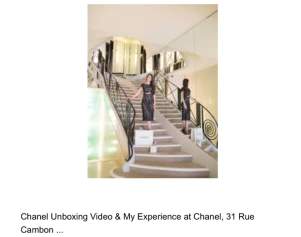
Picture 11: One of the social media posts from a Chanel Store
Another concept which is a measurement for brand’s success is the brand architecture, and brand architecture is measured by “growth in sales, equity across multiple market segments, equity across multiple price points, extensions, sub-branding, and licensing” (Keller, 2009). For instance, Chanel is using brand extension as a strategy. Chanel launched a Chanel Spa in the “Hôtel Ritz in Paris, where Chanel founder Coco Chanel once lived for more than three decades. Besides facials and five-star pedicures, Chanel’s extensive skin-care products also take center stage inside the soon-to-be-opened ‘temple of beauty’, providing women with a unique and authentic experience” (Vallois 2015). (Picture 12). Chanel extended the brand by providing a valuable spa experience for customers, and used every aspect to reflect its brand identity.
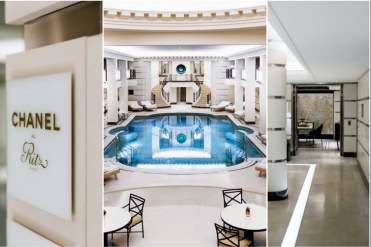
Picture 12: Chanel Spa at Ritz
Chanel’s Future Potential
The creative business model of Chanel constructs a promising future potential. Also Pavlovsky mentioned in his interview, “Every brand has to decide what they want for their future. If a brand wants see-now, buy-now, then good for them, but I don’t think it’s the thing to do with Chanel because of our creative business model” (Conlon 2016). Karl Lagerfeld is the another important figure behind Chanel’s success, and future potential. E-commerce of Chanel, harmonization of pricing (“allowing customers in all regions the chance to make their purchases on home turf, without needing to travel to take advantage of currency fluctuations between markets” (Conlon 2016)), and creative designs are the key factors behind the brand’s and Karl Lagerfeld’s success and also the future potential. Chanel’s products are having rapid value increases overtime, because the brand is increasing its brand value in the same direction either. Even the same products are gaining value through years. For instance, Chanel’s flap bag became almost twenty-five times more valuable than it was in the 1955. (Picture 13)
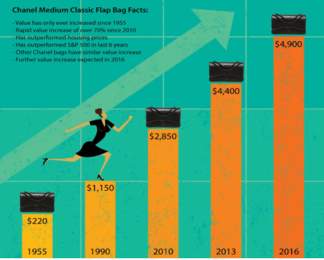
Picture 13: Chanel Classic Flap Bag Value Increase Over Time
Technological developments made brands to construct digitized offerings to increase their values, and profits for the future. According to forecasts, luxury brands are “growing through value rather than volume” (McKinsey & Company 2017). To add digitalisation in their value offerings, Chanel also used technologic figures in their designs. “2017 collection was opened by two robots (followed by futuristic models carrying digitalised clutches and laptop holders)” (Conlon 2016). (Picture 14)
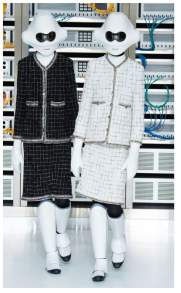
Picture 14: Robots in Chanel’s 2017 Collection Opening
On the other hand, even if the brands are highly responsive to the changes, more serious economic and social situations like, terrorist attacks in France, the Brexit vote in the UK, and the volatility of the Chinese stock market, can affect their market share. Those are also the reasons behind luxury fashion industry has only increased its global market share average at 0.5-1% (McKinsey & Company 2017). Also Chanel’s “net income fell nearly 35% from $1.34 billion to $874 million in the last year” (Inside Retail Asia, 2017).
Conclusion
Another challenge that luxury fashion brands are facing with is, being appeal to younger generations. Since Y Generation, younger populations became effective in the luxury market sales (Thomas 2015). Nowadays, people “start purchasing luxury at a younger age compared to their parents” (Jay 2012). Therefore, in the conclusion part, a new product, which mostly targets younger generations, is going to be described as a suggestion. “Brand extension is a common strategy of introducing new products to the marketplace” (Kim and Lavack, 1996), mostly to broaden its customer scale.
Since the design of the little black dress, Chanel designs have important role on affecting customer’s color preferences. As a new product offering, new lipstick collection which has the shades of Chanel No.5, is going to take a part as a limited edition. Chanel is a brand, which has high brand recognition with its minimalistic designs, mostly in black-white colours, however the new shades of orange is going to be used to get attention from younger population, because at the same time orange symbolizes exception, joy, power, luxury, vividness and tastiness as a color (Kinsella and Lloyd, 2017).
Chanel always preserved its heritage in new designs, that is the reason new lipstick collection is going to name after one of the most iconic product of Chanel, Chanel No.5. In 2016, Chanel also introduced an eyeshadow palette inspired by its famous tweed jacket (Mc Donald 2016). Brands can “take advantage of brand name recognition and image to enter new markets faster and even more successful” (Aaker and Keller, 1990; Pitta and Katsanis, 1995; Stegemann, 2006 cited in Hennigs et al. 2013). Even that new lipstick collection of Chanel is not going to create any product categories, the brand is going to increase its brand recognition among younger population with it. To reduce risks, and increase exclusivity, the lipstick collection will be a limited edition and in premium pricing. In order to garner younger customers, getting direct feedback, and having high customer involvement (Kim & Ko 2012) marketing activities will mostly be conducted with digital channels, especially on social media for the new collection.
References
Aaker, D. (2009). Managing Brand Equity: Capitalizing on the Value of a Brand Name. New York, NY: Free Press [u.a.].
Aaker, J.L. (1997), “Dimensions of brand personality”, Journal of Marketing Research, Vol. 34, pp. 347-56. [Accessed 13 Apr. 2018].
Agnew, H. (2017). Why Gabrielle is still Chanel’s biggest asset. [online] Ft.com. Available at: https://www.ft.com/content/28612c64-f779-11e6-9516-2d969e0d3b65 [Accessed 19 Apr. 2018].
Amatulli, C. and Guido, G. (2012). Externalised vs. internalised consumption of luxury goods: propositions and implications for luxury retail marketing. The International Review of Retail, Distribution and Consumer Research, 22(2), pp.189-207.
Amatulli, C., Mileti, A., Speciale, V. and Guido, G., Tomacelli, C., Prete I., Longo A. (2015) “Mix-and-Match” Fashion Trend and Luxury Brand Recognition: An Empirical Test Using Eye-tracking, Fashion Theory, 20:3, 341-362, DOI: 10.1080/1362704X.2015.1082294
Amatulli, C., Mileti, A., Speciale, V. and Guido, G. (2016). Chapter 11 The Relationship between Fast Fashion and Luxury Brands: An Exploratory Study in the UK Market. In: F. Mosca and R. Gallo, ed., Global Marketing Strategies for the Promotion of Luxury Goods. Hershey PA, USA: Business Science Reference (an imprint of IGI Global), pp.244-265.
Atwal, G. and Williams, A. (2009), “Luxury brand marketing: the experience is everything”, Journal of Brand Management, Vol. 16 Nos 5/6, pp. 338-346.
Beverland, M. (2009). Building Brand Authenticity. United States: Palgrave Macmillan.
Birtwistle G., Freathy P., (1998) “Customer decision making in fashion retailing: a segmentation analysis”, International Journal of Retail & Distribution Management, Vol. 26 Issue: 4, pp.147-154, https://doi.org/10.1108/09590559810214912
Blanks, T. (2016). What Karl Lagerfeld Likes Most About Chanel. [online] The Business of Fashion. Available at: https://www.businessoffashion.com/articles/fashion-show-review/just-in-chanel-couture-autumn-2016 [Accessed 19 Apr. 2018].
Blanks, T. (2017). Reflections and Opportunism at Chanel. [online] The Business of Fashion. Available at: https://www.businessoffashion.com/articles/fashion-show-review/just-in-chanel-haute-couture-ss17 [Accessed 19 Apr. 2018].
Bridson, K., Evans J. (2004). “The Secret to a Fashion Advantage is Brand
Orientation.” International Journal of Retail & Distribution Management 32, no. 8 (2004): 403-411.
Brand Positioning Chanel. (2018). [image] Available at: https://louisvuittonbrand.wordpress.com/brand-positioning/ [Accessed 20 Apr. 2018].
BXP Magazine. (2009). Singularly Coco: The House of Chanel controls every detail for Global launches of classic and refined packages. [online] Available at: http://www.bxpmagazine.com/article/singularly-coco-house-chanel-controls-every-detail-global-launches-classic-and-refined [Accessed 18 Apr. 2018].
Byun, S. E., and B. Sternquist. (2011). “Fast Fashion and in-store Hoarding: The Drivers, Moderator, and Consequences.” Clothing and Textile Research Journal 29(3): 187–201.10.1177/0887302X11411709
Carroll, M. (2012). How Fashion Brands Set Prices. [online] Forbes.com. Available at: https://www.forbes.com/sites/matthewcarroll/2012/02/22/how-fashion-brands-set-prices/#31fc1894822d [Accessed 19 Apr. 2018].
Cavender R., Kincade D., (2014) “Management of a luxury brand: dimensions and sub- variables from a case study of LVMH”, Journal of Fashion Marketing and Management, Vol. 18 Issue: 2, pp.231-248, https://doi.org/10.1108/JFMM-03-2013-0041
Chanel Camellia. (2018). [image] Available at: https://tr.pinterest.com/pin/355573333064423774/ [Accessed 21 Apr. 2018].
Chanel No.5. (2018). [image] Available at: https://gossips.bg/v-opasnost-li-e-lyubimiyat-ni-chanel-n-5/5-things-you-should-know-about-coco-chanel/ [Accessed 12 Apr. 2018].
Chanel Packaging (2018). [image] Available at: https://www.tradesy.com/i/chanel-gold-black-medallion-full-package-with-bows-box-pouch-bag-earrings/20234469/ [Accessed 20 Apr. 2018].
Chanel Ritz Spa (2016). [image] Available at: http://wluksusie.pl/2016/08/chanel-spa-w-paryskim-ritz [Accessed 2 Apr. 2018].
Chanel Store. (2018). [image] Available at: https://www.prosyscom.com.my/chanel-sues-high-end-vintage-store-for-retail-knockoffs-and-false-advertising/ [Accessed 2 Apr. 2018].
Chanel Suits. (2018). [image] Available at: https://www.pinterest.co.uk/pin/565694403177048129/ [Accessed 6 Apr. 2018].
Chanel, Tweed Jacket. (2018). [image] Available at: https://www.jolicloset.com/en-gb/designers-women/chanel/womens-clothing/jackets/chanel-tweed-jacket–45940 [Accessed 25 Apr. 2018].
Chanel Unboxing Video & My Experience at Chanel, 31 Rue Cambon Paris. (2016). [image] Available at: http://everydayelegancebyjacqui.com/2016/09/chanel-unboxing-video-my-experience-at-chanel-31-rue-cambon-paris/ [Accessed 20 Apr. 2018].
Chesters, A. (2012). A brief history of Chanel. [online] the Guardian. Available at: https://www.theguardian.com/fashion/fashion-blog/2012/feb/20/brief-history-of-chanel [Accessed 13 Apr. 2018].
Coco Beauty Arcade. (2018). Mintel. [online] Available at: http://academic.mintel.com/trends/#/observation/889785 [Accessed 4 Apr. 2018].
Coco Chanel and Chanel Image. (2018). [image] Available at: http://entrepreneurhalloffame.com/coco-chanel/ [Accessed 20 Apr. 2018].
Conlon, S. (2016). Charting The Future of Chanel. [online] Vogue.co.uk. Available at: http://www.vogue.co.uk/article/bruno-pavlovksy-chanel-president-fashion-interview-see-now-buy-now-ecommerce [Accessed 19 Apr. 2018].
Conlon, S. (2017). How Chanel Successfully Curbed Counterfeiters. [online] Vogue.co.uk. Available at: http://www.vogue.co.uk/article/chanel-wins-counterfeit-case-amazon-sellers [Accessed 9 Apr. 2018].
Ellison, J. (2018). Chanel and Farfetch team up to reshape luxury retail experience. [online] Ft.com. Available at: https://www.ft.com/content/b7dafa04-1330-11e8-8cb6-b9ccc4c4dbbb [Accessed 13 Apr. 2018].
Emond P. (2009) “Managing Fashion and Luxury Companies”, Journal of Fashion Marketing and Management: An International Journal, Vol. 13 Issue: 4, pp.582-584,https://doi.org/10.1108/13612020910991420
Esmeraldo, M. (2012). Less is More: Minimalism in Fashion – Minimalissimo. [online] Minimalissimo. Available at: https://minimalissimo.com/less-is-more-minimalism-in-fashion/ [Accessed 19 Apr. 2018].
Farfan, B. (2015) What are Luxury Retail Brands Company/Corporate Mission Statements? Availableat: http://retailindustry.about.com/od/CompanyMissionStatementsRetail/fl/What-are-Luxury-Retail-Brandsrsquo-CompanyCorporate-Mission-Statements.htm (Accessed: 20th April 2018)
Fog, K., Budtz, C. and Yakaboylu, B. (2005) Storytelling: Branding in Practice. Berlin: Springer.
Forbes.com. (2017). The World’s Most Valuable Brands 2017 RANKING. [online] Available at: https://www.forbes.com/pictures/591c87fc31358e03e5593101/best-brands–2017/#63d481607756 [Accessed 8 Apr. 2018].
Gabrielli, V., I. Baghi, and V. Codeluppi. (2013). “Consumption Practices of Fast Fashion Products.” Journal of Fashion Marketing and Management 17(2): 206–224.
Guber, P. (2007) The four truths of the storyteller. Harvard Business Review 85(12): 52–59.
Guthrie M., Kim H. S., Jung J., (2008) “The effects of facial image and cosmetic usage on perceptions of brand personality”, Journal of Fashion Marketing and Management: An International Journal, Vol. 12 Issue: 2, pp.164-181, https://doi.org/10.1108/13612020810874863
Hennigs N., Wiedmann K. P., Behrens S., Klarmann C., Carduck J., (2013) “Brand extensions: A successful strategy in luxury fashion branding? Assessing consumers’ implicit associations”, Journal of Fashion Marketing and Management: An International Journal, Vol. 17 Issue: 4, pp.390-402, https://doi.org/10.1108/JFMM-03-2013-0022
Hoch, S.J. (2002) Product experience is seductive. Journal of Consumer Research 29(3): 448–454.
Holbrook, M.B. and Hirschman, E.C. (1982) The experiential aspects of consumption: consumer fantasies, feelings, and fun. Journal of Consumer Research 9(2): 132–140.
Holt B. (2016). How Karl Lagerfeld made Chanel the biggest designer name in the world. [online] The Telegraph. Available at: https://www.telegraph.co.uk/fashion/brands/how-karl-lagerfeld-made-chanel-the-biggest-designer-name-in-the/ [Accessed 13 Apr. 2018].
Holt, D. (2014). How Brands Become Icons. Boston: Harvard Business Review Press.
Hui, M.K. and Bateson, J.E.G. (1991) Perceived control and the effects of crowding and consumer choice on the service experience. Journal of Consumer Research 18(2): 174–184.
Inside Retail Asia. (2017). Leaked report shows loss for Chanel International – Inside Retail Asia. [online] Available at: https://insideretail.asia/2017/08/23/leaked-report-shows-loss-for-chanel-international/ [Accessed 20 Apr. 2018].
It Turns Out Purses May Be a Better Investment Than Real Estate. (2017). [image] Available at: https://www.simplemost.com/turns-purses-may-better-investment-real-estate/ [Accessed 21 Apr. 2018].
Jay, E. (2012). “New breed of consumer shakes up luxury fashion”, Mobile Marketer, available at: www.mobilemarketer.com/cms/opinion/columns/12361.html (accessed 1April 2018).
Jennings, T. (2008). Shades of Chanel. Clothing and Textiles Research Journal, 26(1), pp.91-93.
DOI:https://doi.org/10.1177/0887302X07305572 [Accessed 13 Apr. 2018].
Joy, A. and Sherry Jr, J.F. (2003). Speaking of art as embodied imagination: A multisensory approach to understanding aesthetic experience. Journal of Consumer Research 30(2): 259-282.
Kapferer, J. and Bastien, V. (2009). Luxury marketing plays by a different set of rules. [online] Ft.com. Available at: https://www.ft.com/content/450d99e4-56e9-11de-9a1c-00144feabdc0 [Accessed 20 Apr. 2018].
Karl Lagerfeld’s Robo-Chics Walk On the Runway For Chanel Spring-Summer 2017 At Paris Fashion Week. (2016). [image] Available at: https://worldarchitecture.org/articles/cgchn/karl_lagerfeld_s_robochics_walk_on_the_runway_for_chanel_springsummer_2017_at_paris_fashion_week.html [Accessed 20 Apr. 2018].
Keller, K. (2001). Building Customer-based Brand Equity: A Blueprint for Creating Strong Brands. Marketing Science Institute, [online] Volumes 1-107 Report: Working Paper. Available at: http://anandahussein.lecture.ub.ac.id/files/2015/09/article-4.pdf [Accessed 20 Apr. 2018].
Keller, K.L. (2009), “Managing the growth tradeoff: challenges and opportunities in luxury branding”, Brand Management, Vol. 16 Nos 5/6, pp. 290-301.
Kelley, T. and Littman, J. (2006) The Ten Faces of Innovation: Strategies for Heightening Creativity. London: Profile Books.
Kerin, R., Howard, D. and Jain, A. (1992). “Store Shopping Experience and Consumer Price-Quality-Value Perceptions”. Journal of Retailing, 68(4), pp.376-397.
Kim, C.K. and Lavack, M. (1996), “Vertical brand extensions: current research and managerial implications”, Journal of Product & Brand Management, Vol. 5 No. 6, pp. 24-37.
Kim, A. and Ko, E. (2012). Do social media marketing activities enhance customer equity? An empirical study of luxury fashion brand. Journal of Business Research, 65(10), pp.1480-1486.
Kinsella, A. and Lloyd, H. (2017). The Significance of the Colour Orange in Art, Fashion & Film. [online] AnOther. Available at: http://www.anothermag.com/design-living/10303/the-significance-of-the-colour-orange-in-art-fashion-film [Accessed 20 Apr. 2018].
Little Black Dress. (2018). [image] Available at: https://encircletheworld.wordpress.com/2013/08/07/iconic-little-black-dress-exhibition-at-the-mona-bismarck-american-center-for-art-culture-paris/ [Accessed 8 Apr. 2018].
Lundqvist, A., Liljander, V., Gummerus, J. and Van Riel, A. (2013), “The impact of storytelling on the consumer brand experience: the case of a firm-originated story”, Journal of Brand Management, Vol. 20 No. 4, pp. 283-297.
Mandarino, K. (2016). “Niche Brands: Understanding how niche fashion startups connect with Millennials,” Joseph Wharton Scholars. Available at h p://repository.upenn.edu/joseph_wharton_scholars/9 [Accessed 17 Apr. 2018].
Mazzalovo, G. and Chevalier, M. (2008). Luxury brand management. Hoboken, N.J.: John Wiley & Sons.
McDonald, S. (2016). This Is the Makeup Version Of Chanel’s Iconic Tweed Jacket. [online] The Zoe Report. Available at: http://thezoereport.com/beauty/makeup/chanel-gold-eyeshadow-palette/ [Accessed 20 Apr. 2018].
McKinsey & Company (2017). the State of Fashion 2017. The Business of Fashion and McKinsey & Company.
Morrison, S. and Crane, F. (2007). Building the service brand by creating and managing an emotional brand experience. Journal of Brand Management 14(5): 410–421.
Okonkwo (2007). Luxury fashion Branding: Trends, Tactics, Techniques, Basingstoke, Hampshire UK: Palgrave Macmillan, 2007.
Pittard N., Ewing M., Jevons C., (2007). “Aesthetic theory and logo design: examining consumer response to proportion across cultures”, International Marketing Review, Vol. 24 Issue: 4, pp.457-473, https://doi.org/10.1108/02651330710761026
Payne, A. and Holt, S. (2001). Diagnosing Customer Value: Integrating the Value Process and Relationship Marketing. British Journal of Management, 12(2), pp.159-182.
Payne, A., Storbacka, K., Frow, P. and Knox, S. (2009). Co-creating brands: Diagnosing and designing the relationship experience. Journal of Business Research, 62(3), pp.379-389.
Pine II, J.B. and Gilmore, J.H. (1999). The Experience Economy: Work is Theatre and Every Business a Stage. Cambridge, MA: Harvard Business School Press.
Prahalad, C. and Ramaswamy, V. (2004). Co-creation experiences: The next practice in value creation. Journal of Interactive Marketing, 18(3), pp.5-14.
Ritson, M., Week, M., Woollen, P., Fleming, M. and Joy, S. (2010). Chanel’s luxury dream is turning to dust – Marketing Week. [online] Marketing Week. Available at: https://www.marketingweek.com/2010/08/11/chanels-luxury-dream-is-turning-to-dust/ [Accessed 17 Apr. 2018].
Ryder, I. (2007). Customer experience. Journal of Brand Management 15(2): 85–88.
Schmitt, B.H. (1999). Experiential Marketing: How to Get Customers to Sense, Feel, Think, Act, Relate to Your Company and Brands. New York: The Free Press.
Seymour, A. (2016). Cartier and Chanel have greatest brand recognition in lucrative Chinese market – WatchPro. [online] Watchpro.com. Available at: http://www.watchpro.com/cartier-and-chanel-have-greatest-brand-recognition-in-lucrative-chinese-market/ [Accessed 19 Apr. 2018].
Silverstein, M.J. and Fiske, N. (2003). Luxury for the masses. Harvard Business Review 81(4): 48–57.
Statista (2017). “Brand value of the leading 10 most valuable luxury brands worldwide in 2017 (in million U.S. dollars)”. [image] Available at: https://www.statista.com/statistics/267948/brand-value-of-the-leading-10-most-valuable-luxury-brands-worldwide/ [Accessed 9 Apr. 2018].
Statista (2017). “Brand value of the leading 10 most valuable luxury brands worldwide in 2017 (in million U.S. dollars)”. Available at: https://www.statista.com/statistics/267948/brand-value-of-the-leading-10-most-valuable-luxury-brands-worldwide/ [Accessed 9 Apr. 2018].
The Business of Fashion. (2013). Chanel’s Wertheimer Family Seen with $19 Billion Fortune. [online] Available at: https://www.businessoffashion.com/articles/news-analysis/chanels-wertheimers-found-11-billion-richer-selling-no-5 [Accessed 13 Apr. 2018].
The Economist. (2014). Beauty and the beasts. [online] Available at: https://www.economist.com/news/special-report/21635758-think-global-act-artisan-beauty-and-beasts [Accessed 18 Apr. 2018].
Thomas R. J. (2015). Out with the old and in with the new: a study of new kit sponsorship and brand associations in the Barclays Premier League. Journal of Product & Brand Management 24:3, 229-251. [Accessed 13 Apr. 2018].
Tynan, C., McKechnie, S. and Chhuon, C. (2010). Co-creating value for luxury brands. Journal of Business Research, 63(11), pp.1156-1163.
Vallois, P. (2015). 8 Latest Luxury Brand Experiences: Hermès, Chanel, Rolls-Royce. [online] Luxury Society. Available at: https://www.luxurysociety.com/en/articles/2015/08/8-latest-luxury-brand-experiences-hermes-chanel-rolls-royce/ [Accessed 17 Apr. 2018].
Vargo, S. and Lusch, R. (2004). Evolving to a New Dominant Logic for Marketing. Journal of Marketing, 68(1), pp.1-17.
Vigneron F., Johnson L. W. (1999). A review and a conceptual framework of prestige seeking consumer behaviour. Acad Market Sci Rev 1999; 1:1–15.
Vigneron F., Johnson L. W. (2004). Measuring perceptions of brand luxury. Brand Manag;11(6):484–506.
Wedel M., Kamakura W.A. (2000). Segmentation Bases. In: Market Segmentation. International Series in Quantitative Marketing, vol. 8. Springer, Boston, MA
Wilkins, S. (2018). Brand Report: Chanel. [online] Issuu. Available at: https://issuu.com/sarahwilkins47/docs/chanel_report [Accessed 9 Apr. 2018].
Wilson, F. (2010). Coco Chanel: The Legend and the Life by Justine Picardie: review. [online] Telegraph.co.uk. Available at: https://www.telegraph.co.uk/culture/books/bookreviews/8034462/Coco-Chanel-The-Legend-and-the-Life-by-Justine-Picardie-review.html [Accessed 17 Apr. 2018].
Yershon (2016). “When Worlds Collide: Technology and Creativity” – An Interview with Nicole Yershon. [online] Marketingjournal.org. Available at: http://www.marketingjournal.org/when-worlds-collide-technology-and-creativity-an-interview-with-nicole-yershon/ [Accessed 17 Apr. 2018].
Cite This Work
To export a reference to this article please select a referencing stye below:
Related Services
View allRelated Content
All TagsContent relating to: "Marketing"
Marketing can be described as promoting and selling certain products or services to meet the needs of the customer. Tasks involved with Marketing include market research, content creation, advertising, and more.
Related Articles
DMCA / Removal Request
If you are the original writer of this dissertation and no longer wish to have your work published on the UKDiss.com website then please:




